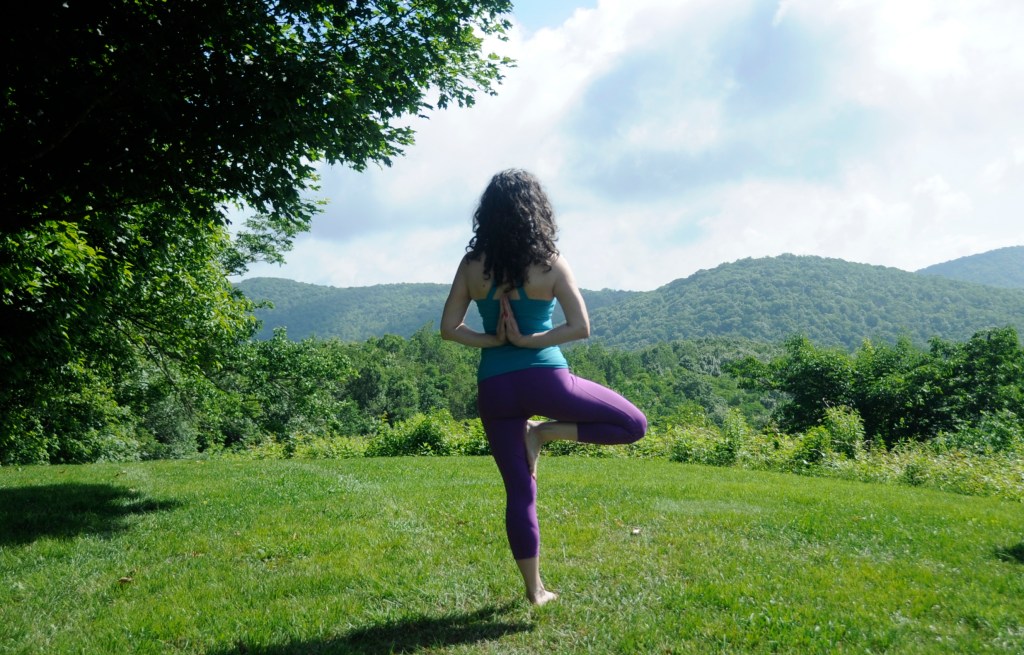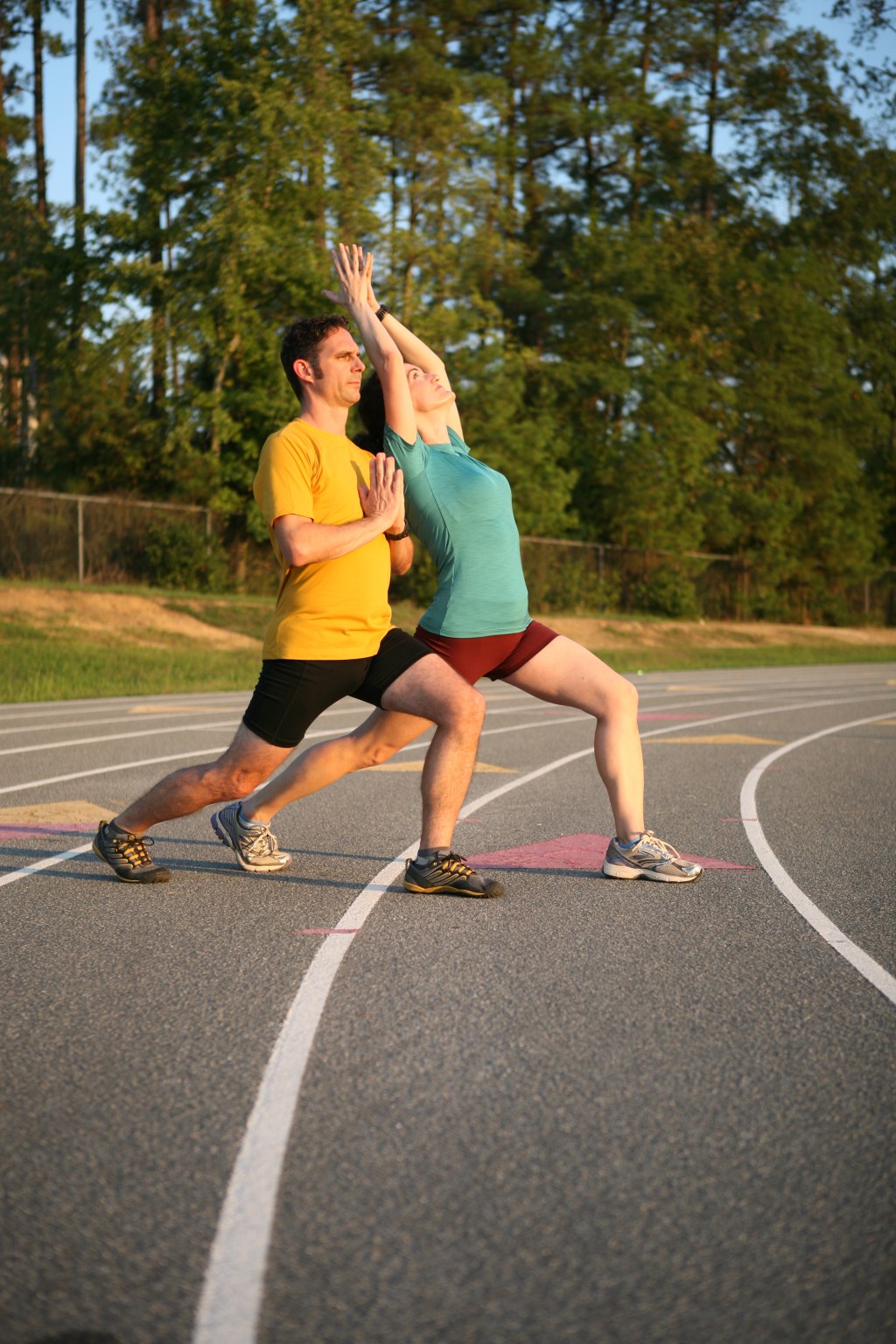For athletes, yoga can provide a wonderful complement to training by conferring strength, flexibility and focus. Together, these amount to balance—the key to preventing injury and enjoying your activities for years to come.
Balance Your Body in Space
For outdoor athletes who’ll be moving over uneven surfaces or on water, balance is critical. Yoga poses help with proprioception, your sense of where your body is in space. Single-leg balance poses like tree pose and dancer pose build lower-leg and hip strength, while challenging the core and conferring focus. Moving between poses, as we do in flow yoga classes, reinforces your ability to balance in space and strengthens the stabilizing muscles that keep you upright.

Try this: tree pose.
Stand on one leg with the other leg bent at the knee and rotated to the side. Rest your foot on the ground or against your standing leg, anywhere except against the knee. Use your arms for balance, holding a wall, table or tree if necessary, or reach your hands behind your back to stretch your chest. You’ll be building body awareness, balance and focus. Hold for ten to fifteen breaths, then switch sides.
Balance in the Body
Yoga poses can correct imbalances within the body that can lead to injury. If you spend much of your day in a chair, then sit in a kayak or on a bike for recreation, you’re probably tight and strong in the front of your body—to the detriment of the back of the body, including your back and glutes. Yoga, particularly back-bending poses and lunges, can bring you into better balance front to back. It also corrects the imbalances between left and right that are reinforced in ball sports and when we favor a dominant side. And yoga can help with balance between the upper and lower body by building core, shoulder and arm strength in poses where your hands are on the ground.

Try this: crescent lunge pose.
Take a split-leg lunge, left knee just over left ankle. Keeping your hips squared forward, press back through your right heel. Hold your hands in prayer or stretch them overhead, arching into a backbend. You’ll be stretching the right hip flexors and quadriceps, as well as the chest; you’ll also be building strength in the left hip and lower leg. Hold for ten to fifteen breaths, then switch sides.
Balance between Work and Rest
Most critical for your performance and enjoyment is finding the right balance between activity and recovery. In periods where work and training is high, yoga can give you downtime. Restorative yoga, which includes long holds of relaxing poses, provides a break for your body and your mind as you find deep release.

Try this: legs up the wall pose.
Rest with your legs up a wall. If you have a bolster or rolled blanket handy, slip it under your pelvis. Spread your arms to stretch your chest. Stay like that for five to ten minutes. You’ll be releasing the front of your torso and the backs of your thighs as you calm your nervous system.
Softer styles of yoga emphasize the process over the outcome—being, rather than doing. In that way, yoga complements the work of your sport, where it’s easy to get caught up in goals like sending a route or achieving a personal best time. Practicing yoga will help you appreciate the journey more, bringing mindfulness to everything you do on the mat and on the trail.
For more, please read my books, including The Athlete’s Guide to Yoga and Everyday Yoga; stream classes with me, where you can find several sport-specific options; and visit me and my colleagues at REI stores nationwide in March 2015.
Check out REI’s Outdoor School Fitness Classes to learn more.
